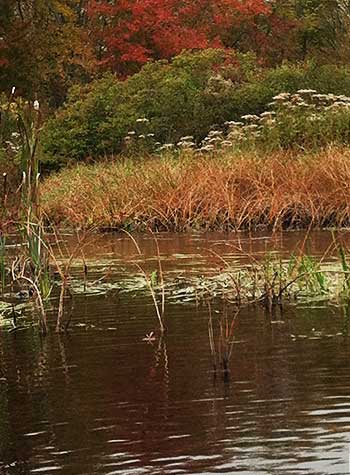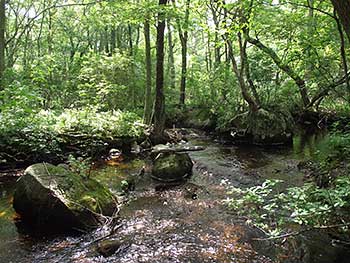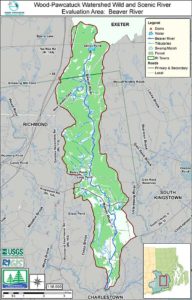This small second order stream starts at James Pond on the Exeter/West Greenwich line. It primarily flows through Richmond to its confluence with the Pawcatuck River. Much of the Beaver River passes through protected areas such as the RIDEM Hillsdale Conservation Area and The Nature Conservancy’s Beaver River and Grassy Pond Preserves. The Beaver River is an excellent brook trout habitat. The southern portion of the river is fairly flat, supplying irrigation water for agricultural fields. Wetlands dominate the surrounding land as the stream nears the Pawcatuck River.
Outstandingly Remarkable Values
Ecology – The Beaver River is 91% undeveloped and heavily forested. Nearly half the river runs through protected properties held by RIDEM, The Nature Conservancy and local land trusts. Due to these large areas of unbroken forested blocks, the Beaver River provides clean, cold water habitat that supports a large number of invertebrate species. The river contains healthy populations of wild brook trout and mussels. Many vernal pools are located near the river, supporting amphibian species such as wood frogs and spotted salamanders. A large variety of birds nest in the deep forest areas.
Cultural – The Hillsdale Historic and Archeological District was a center for various kinds of milling, using the Beaver River for water power. Hillsdale produced textiles, primarily cloth, in the western part-of Richmond during the period 1830 to 1870. Presently the mill village exists as a series of archeological sites: industrial, commercial, and domestic, strung out along Hillsdale Road and set in 68 acres of second growth, hardwood forest. The Historic District is a small portion of a large, 2,000 acre, state-owned wooded tract, the Hillsdale Management Area. The various components of the mill village have been preserved from subsequent reuse or development and feature a high degree of archeological integrity.

Wetland at the confluence of Beaver and Pawcatuck Rivers

Beaver River near Old Mountain Road, Richmond


